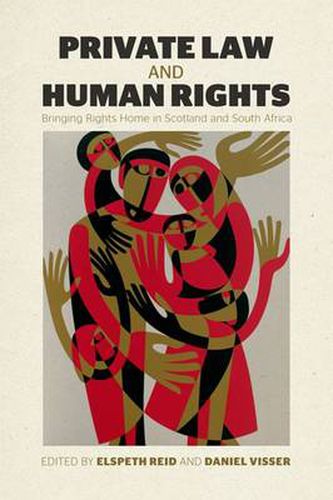Readings Newsletter
Become a Readings Member to make your shopping experience even easier.
Sign in or sign up for free!
You’re not far away from qualifying for FREE standard shipping within Australia
You’ve qualified for FREE standard shipping within Australia
The cart is loading…






Scotland and South Africa are mixed jurisdictions, combining features of common law and civil law traditions. Over the last decade, a shared feature in both Scotland and South Africa has been a new and intense focus on human rights. In Scotland, the European Convention on Human Rights now constitutes an important element in the foundation of all domestic law. Similarly, the Constitution of the Republic of South Africa, adopted in 1996, has a Bill of Rights as its cornerstone. This binds the legislature, the executive, the judiciary and all organs of state - and also private parties. In some ways, the Scottish and South African experience could not be more dissimilar, and the “constitutional moments’ from which these documents sprang were very different. At the same time, the parallels are close and compelling. This book, written by experts from both jurisdictions, examines exactly how human-rights provisions influence private law, looking at all branches of the subject. Moreover, it gives a unique perspective by comparing the approach in these kindred legal systems, providing a benchmark for both.
$9.00 standard shipping within Australia
FREE standard shipping within Australia for orders over $100.00
Express & International shipping calculated at checkout
Scotland and South Africa are mixed jurisdictions, combining features of common law and civil law traditions. Over the last decade, a shared feature in both Scotland and South Africa has been a new and intense focus on human rights. In Scotland, the European Convention on Human Rights now constitutes an important element in the foundation of all domestic law. Similarly, the Constitution of the Republic of South Africa, adopted in 1996, has a Bill of Rights as its cornerstone. This binds the legislature, the executive, the judiciary and all organs of state - and also private parties. In some ways, the Scottish and South African experience could not be more dissimilar, and the “constitutional moments’ from which these documents sprang were very different. At the same time, the parallels are close and compelling. This book, written by experts from both jurisdictions, examines exactly how human-rights provisions influence private law, looking at all branches of the subject. Moreover, it gives a unique perspective by comparing the approach in these kindred legal systems, providing a benchmark for both.